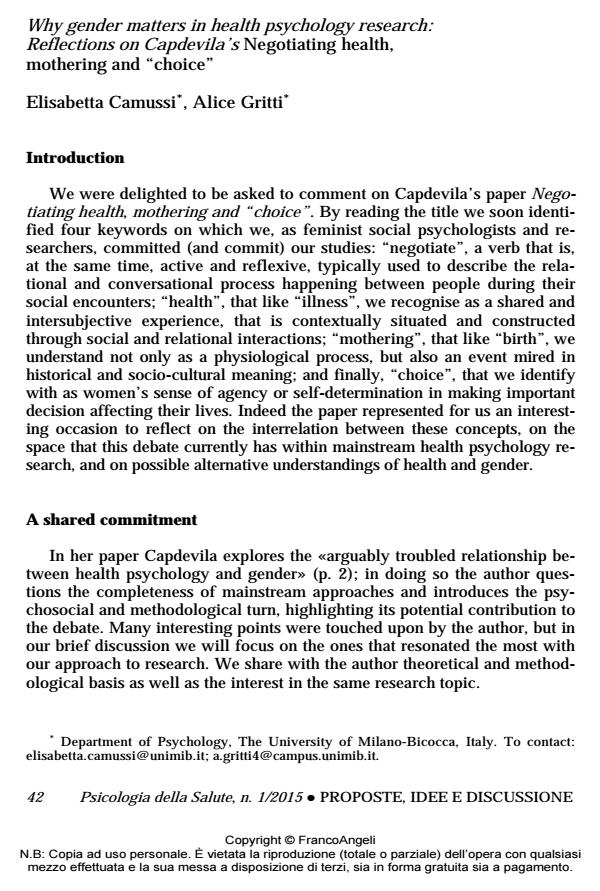Why gender matters in health psychology research: Reflections on Capdevila’s Negotiating health, mothering and "choice"
Journal title PSICOLOGIA DELLA SALUTE
Author/s Elisabetta Camussi, Alice Gritti
Publishing Year 2015 Issue 2015/1
Language English Pages 10 P. 42-51 File size 59 KB
DOI 10.3280/PDS2015-001005
DOI is like a bar code for intellectual property: to have more infomation
click here
Below, you can see the article first page
If you want to buy this article in PDF format, you can do it, following the instructions to buy download credits

FrancoAngeli is member of Publishers International Linking Association, Inc (PILA), a not-for-profit association which run the CrossRef service enabling links to and from online scholarly content.
- Hacking women’s health: A new methodology Elisabetta Camussi, Cinzia Sassi, Edoardo Zulato, Chiara Annovazzi, Maria Cristina Ginevra, in Journal of Prevention & Intervention in the Community /2020 pp.174
DOI: 10.1080/10852352.2019.1624356
Elisabetta Camussi, Alice Gritti, Why gender matters in health psychology research: Reflections on Capdevila’s Negotiating health, mothering and "choice" in "PSICOLOGIA DELLA SALUTE" 1/2015, pp 42-51, DOI: 10.3280/PDS2015-001005